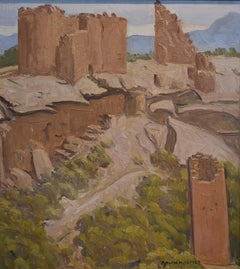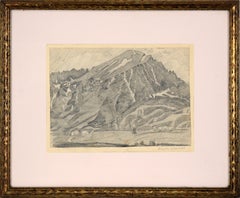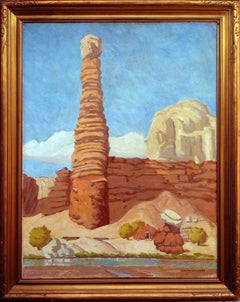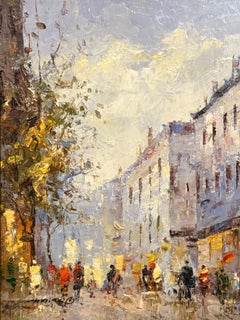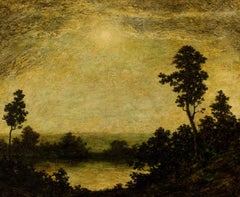Ralph Holmes Art
Known as a writer as well as artist and teacher, Ralph Holmes distinguished himself as a mural painter in Pittsburgh and New York before moving to California, where he had a long teaching and painting career. His landscapes of Yosemite and Bryce Canyon as well as the desert and rolling hills of southern California have brought him national fame. Holmes was born in La Grange, Illinois, and while growing up in Illinois, he attended the Northwestern University for three years, and the Art Institute of Chicago for four years. He studied in Paris, and from 1903–12, was on the faculty of the Art Institute of Chicago. Holmes then spent five years as the Chair of the Department of Painting and Decorating at Carnegie Institute of Technology in Pittsburgh. In 1916, he went West, spending the summer on the Hopi Reservation in Arizona, and from that time, he continued to paint in the Southwest. In 1918, he moved to Atascadero in Southern California and became a teacher at the Otis Art Institute from 1923 to 1948, and for 25 years was also an art instructor at the Marlborough School for girls. Holmes served as art editor and writer for E.G. Lewis's Illustrated Review, was a four-term President of the California Art Club, President of "Art in National Defense", and a member of the Academy of Western Artists. He died in San Luis Obispo.
1930s Impressionist Ralph Holmes Art
Oil
1940s American Impressionist Ralph Holmes Art
Paper, Pencil
1940s Hudson River School Ralph Holmes Art
Canvas, Oil
20th Century Impressionist Ralph Holmes Art
Canvas, Oil
Late 19th Century Hudson River School Ralph Holmes Art
Canvas, Oil
19th Century Hudson River School Ralph Holmes Art
Canvas, Oil
1920s Impressionist Ralph Holmes Art
Canvas, Oil
19th Century Hudson River School Ralph Holmes Art
Canvas, Oil
Late 19th Century Impressionist Ralph Holmes Art
Canvas, Oil
Early 20th Century American Impressionist Ralph Holmes Art
Paper, Color Pencil
Early 1900s Impressionist Ralph Holmes Art
Canvas, Oil
1860s Hudson River School Ralph Holmes Art
Canvas, Linen, Oil
1850s Hudson River School Ralph Holmes Art
Canvas, Oil
Early 20th Century Impressionist Ralph Holmes Art
Canvas, Oil
1870s Hudson River School Ralph Holmes Art
Canvas, Oil
